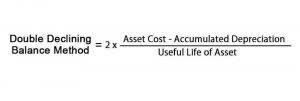
Since you don’t know how a project will progress or grow, it isn’t easy to ensure that you will be profitable at the job level. For this reason, many large commercial construction projects take advantage of unit pricing. Time and material billing approaches can provide less risk since contractors don’t need to estimate everything up front, and they can easily invoice labor through logged hours. Keeping payment terms short, yet reasonable, is a great approach to construction billing. Longer payment terms lead to higher debt ratios which can be detrimental to a company’s finances. Unclear invoices could be a result of illegible writing or a lack of detail.
Tip #8: Use milestone payments

Another drawback can result from reduced cash flow, as cost-plus contracts require the contractor to front most project costs. Fixed price (sometimes referred to as lump sum billing) helps facilitate the bidding process since the total contract price is visible from the beginning. This can help construction companies plan to come in https://www.bookstime.com/articles/construction-billing-methods under budget, ensuring a higher profit margin by the project’s end. The arrears billing method is an ideal choice for construction businesses looking to build trust with new clients and who have strong cash flow. Like the advanced billing method, arrears billing is also best for projects that are expected to be shorter in duration.
- You must fall under the IRS threshold and have the understanding that you’ll eventually need to replace this method with something more robust as your business grows.
- Disputes can arise over the percentage of work completed, requiring detailed and accurate documentation to support every invoice issued.
- However, the completed-contract method allows the contractor to defer paying tax until a year later.
- The billing method of any construction contract is a pivotal detail for both parties.
Find a solution tailored for your business.

However, not all specialize in construction accounting — but rather standard or regular accounting. In contrast, construction companies face a different and much more complicated series of challenges. Construction accounting deals with long-term, flexible contracts with a ton of irregularities — in comparison to other sectors, like retail.
ProWallet Is Building A Better Payments System For The Construction Industry – Forbes
ProWallet Is Building A Better Payments System For The Construction Industry.
Posted: Thu, 29 Dec 2022 08:00:00 GMT [source]
List of major billing methods in construction accounting
Before a project begins, you need a clear idea of what labor, equipment, and material costs you’ll encounter along the way. Ongoing projects benefit from job cost reports, which will track expenses and help you generate accurate estimates and bills. The time and material billing method is self-explanatory, allowing the contractor to bill the client for the time it takes to complete the project and the equipment and materials used. To use this method effectively, the contractor must keep highly detailed records of the man-hours and materials used, so the client receives an accurate bill.
Cost Plus Percentage Billing
Retainer billing involves the client paying a set fee upfront to secure the contractor’s services. This method is common in long-term projects or ongoing maintenance work. However, determining the project’s overall cost in advance can be difficult. This billing method offers transparency, as clients can see the price of construction billing methods each project component. Additionally, this method is useful for larger projects with many components, where estimating the total project cost can be challenging. The advantage of this billing method is that the contractor can earn a higher profit margin, which can benefit projects with high uncertainty or complexity.

One of the most significant advantages of percentage of completion is that you can get a view on profitability before the job is complete. Another benefit is that you don’t have to wait until the end of a project to receive payment. If you can handle your cash flow tactfully, you can keep dollars flowing in without waiting for everything to wrap up. The percentage of completion method requires the use of progress invoices–a billing document used to bill for partial project completion as you complete work. Guaranteed maximum price billing is when the contractor agrees to complete the project for a fixed price but with a cap on the cost. This method offers the client more control over the project’s cost, and the contractor is incentivized to keep costs under control.
- Over the following months, you’ll buy materials, schedule and pay your crew, and deal with suppliers.
- For this reason, many large commercial construction projects take advantage of unit pricing.
- However, in a construction setting, the percentage of completion method will serve as your best bet for staying GAAP compliant when accounting for long-term projects.
- When working with an owner for the first time, it can be difficult to understand what’s required for billing.
- This method is typically chosen for projects where the scope and costs are not clearly defined upfront, providing transparency for the client by detailing every expense.
Billing method #1: Fixed-price billing
- Lump-sum billing, or fixed-price billing, is a method where the contractor and the client agree on a total price for a project before any work starts.
- In effect, unpaid bills or future payments are only recognized when those funds physically transfer hands.
- If you use construction management software, this billing method can be extremely time efficient and ensure professional billing through an automated process.
- The main benefit of milestone payments is that you, as the contractor, don’t need to wait for payment until project completion.
- For my business, one of the headaches was managing both stocks and expenses.
